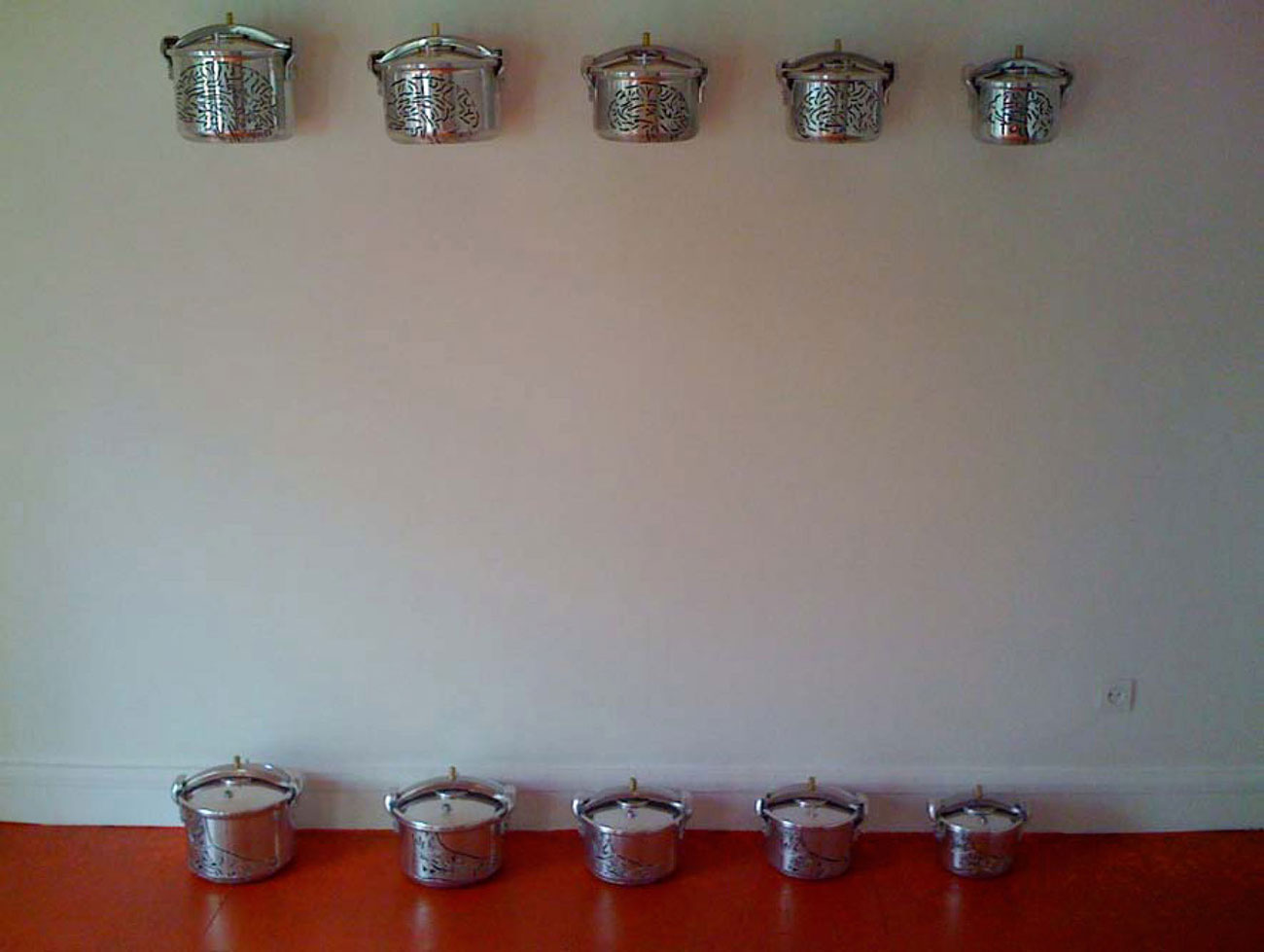Artists in the city
#1 Art at Work



The “Art at Work” exhibition presents works that reflect the socially engaged art currently flourishing in Morocco, throwing into relief the position of the artist in society.
It also reveals, without aiming to be exhaustive, the richness and complexity of one of the most interesting art scenes in the Mediterranean region today.
Since the early 2000s, Moroccans have renewed their desire to give expression to their concerns with regard to the concepts of collective and individual freedoms and the issues that lie at the heart of civic life. The subjects of freedom, power, education and work emerge as key themes for the artists in this exhibition and are central to the Moroccan people’s hopes for a democratic life.
“Art at Work” does not set out to display the weaknesses of the Moroccan social system, weaknesses that can be found all over the world. Rather, it is a journey through the personal visions, arising out of strong convictions, of seven artists who are particularly focused on, and vigilant about, the concerns shared by an entire population.
Curators: Nawal Slaoui, CulturesInterface (Casablanca) et Jean-Roch Bouiller, Mucem
Exhibition design: Struc Archi, Olivier Bedu et Juliette Morel / Graphic design: CL Design
Artists : Mustapha Akrim, Hicham Benohoud, Simohammed Fettaka, Faouzi Laatiris, Youssef Ouchra, Younès Rahmoun, Batoul S’Himi.
The “Art at Work” exhibition presents works that reflect the socially engaged art currently flourishing in Morocco, throwing into relief the position of the artist in society.
It also reveals, without aiming to be exhaustive, the richness and complexity of one of the most interesting art scenes in the Mediterranean region today.
Since the early 2000s, Moroccans have renewed their desire to give expression to their concerns with regard to the concepts of collective and individual freedoms and the issues that lie at the heart of civic life. The subjects of freedom, power, education and work emerge as key themes for the artists in this exhibition and are central to the Moroccan people’s hopes for a democratic life.
“Art at Work” does not set out to display the weaknesses of the Moroccan social system, weaknesses that can be found all over the world. Rather, it is a journey through the personal visions, arising out of strong convictions, of seven artists who are particularly focused on, and vigilant about, the concerns shared by an entire population.
Curators: Nawal Slaoui, CulturesInterface (Casablanca) et Jean-Roch Bouiller, Mucem
Exhibition design: Struc Archi, Olivier Bedu et Juliette Morel / Graphic design: CL Design
Artists : Mustapha Akrim, Hicham Benohoud, Simohammed Fettaka, Faouzi Laatiris, Youssef Ouchra, Younès Rahmoun, Batoul S’Himi.

